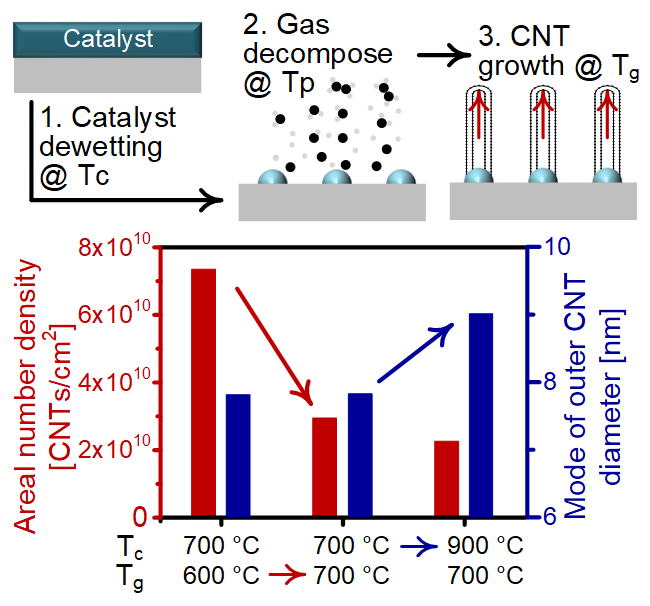
Year
2019Abstract
In chemical vapor deposition (CVD) of vertically aligned carbon nanotubes (CNTs), temperatures for the following three processes are typically coupled: (1) catalyst nanoparticle formation by film dewetting, (2) thermal decomposition of gas precursors, and (3) nucleation/growth of CNTs. Here, we present an approach for complete decoupling of these processes using a custom-designed multizone rapid thermal CVD reactor. We show that in decoupled growth, there is an inverse relationship between density of CNTs and nucleation temperature, while there is no dependence of density on catalyst formation temperature. Importantly, the nucleation/growth temperature that produces the most aligned and densest CNTs is lower than the temperature that produces the tallest CNTs. We also reveal that this inverse relation of density is not because of decreased number density of catalyst nanoparticles, but is rather caused by a marked decrease in the percentage of active catalyst at high nucleation temperatures. A mechanism is proposed to explain this phenomenon based on local spatial nonuniformities of carbon supply in the vicinity of fast-growing CNTs, causing starvation at neighboring catalyst manifested as lower percentage of activation at high temperatures. Our results provide insights into the fundamental tradeoff between requirements for higher CNT density/alignment, and taller CNT structures.








